What’s Wrong With Your Tomatoes?
Find out why your tomatoes have gone bad and what to do about it
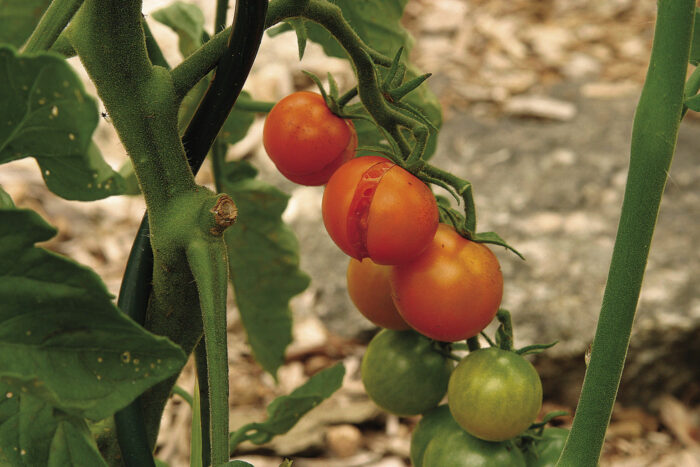
It’s time to be honest with ourselves: We love tomatoes, but sometimes tomatoes don’t love us. Every spring, my neighbors, colleagues, and family dance around spouting the joys of homegrown tomatoes. But here’s the real truth that no one has the gumption to say: Despite our best efforts, we often don’t get a great harvest because something goes wrong during the growing season. Many of these problems, though, are easily avoided; you just need to know in advance what steps to take to circumvent any mishaps or what to do if things inevitably start to go awry along the way.
Problem 1: The tomato fruit splits
Splitting, a common issue, generally occurs after a big rainfall. The plant starts taking up a large amount of water, causing the fruit to swell with moisture, until its skin cannot stretch anymore. The only way to avoid the problem is to tent off the entire plant (and the soil around it) when it rains. Because this is impractical, it’s best to do nothing. As the soil moisture wanes, the plant will stop taking in so much water and the fruit will stop splitting. If this issue is occurring with a potted tomato plant, however, you might be watering it too much. Remember that when a tomato plant starts producing fruit, it only needs about 1 inch of water per week.
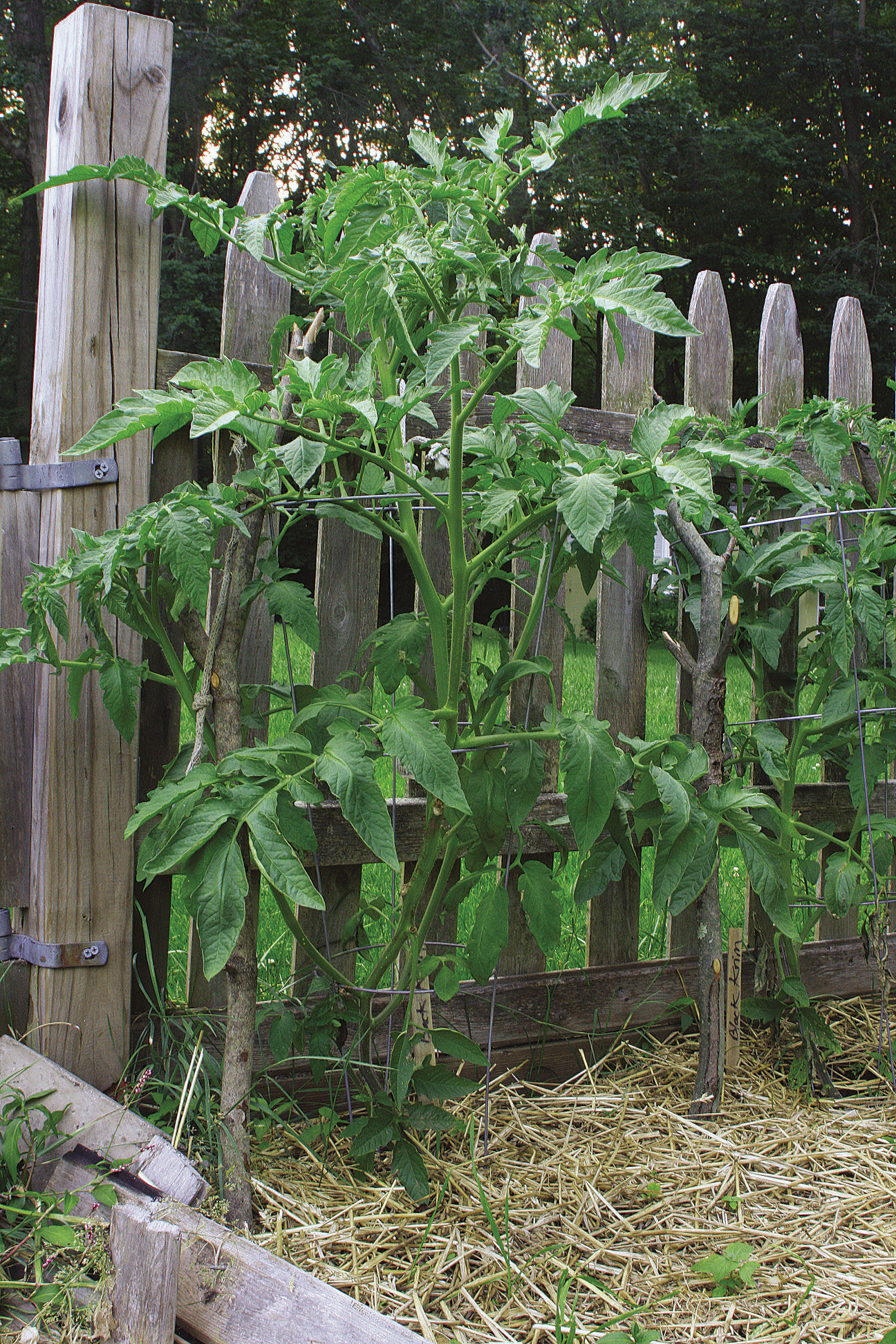
Problem 2: The tomato plants don’t have any flowers
Tomatoes can be temperamental, and when they are too hot, they won’t flower. If you’re not getting any flowers (and, therefore, no fruit), chances are you live in a warm locale and the temperature has risen above 90°F. There are only a few things you can do. You can wait out the hot weather and hope that when things cool down in fall, the plants will have enough energy to produce a late crop of flowers and fruit. Or you can start a new batch of seedlings now and hope that the plants get sizable enough to fruit before temperatures get too low. Another tactic is to take a few cuttings off your existing nonproductive plants and root those in a shallow glass of water before transplanting them outside (again, hoping for a late crop of tomatoes). Next year, look for a variety of early-fruiting tomatoes, such as ‘Bison’, that will give you a good amount of fruit before the mercury gets too high.
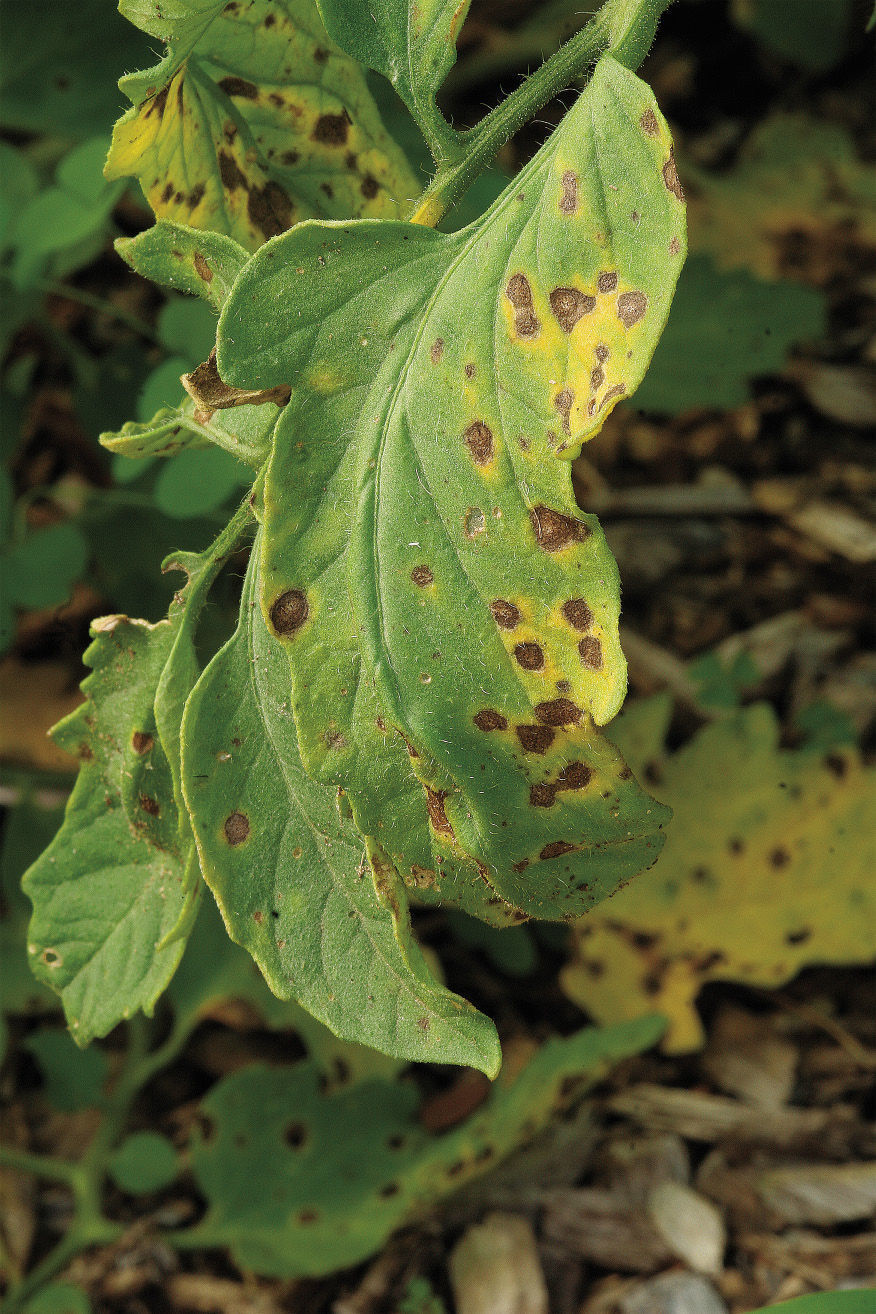
Problem 3: There are greasy brown patches all over your tomato plants
Uh, oh—if you see these marks, you’ve got blight. If this is happening in spring, then your plants have early blight; if it’s happening after they have already begun to set fruit, then it is likely late blight. Either way, there’s not much you can do to salvage the crop. The disease will eventually kill your plant. Remove any plant that has been infected, dispose of it (not in the compost pile), and hope that the disease doesn’t spread to the rest of the tomatoes. Blight is caused by an oomycete pathogen. This organism infects a plant, causing it to develop a fungus, which in turn produces millions of fungal spores that travel through the air, land on other plants, and—if the weather is sufficiently wet—cause new infections. Overly moist conditions allow the spores to spread faster. Blight can only survive on living tissue, so tomatoes will not carry blight overwinter because freezing kills the whole plant. Tomato seeds, even from fruit that was infected with late blight, will not carry the pathogen. So you can use saved seed next year without the fear of blight.
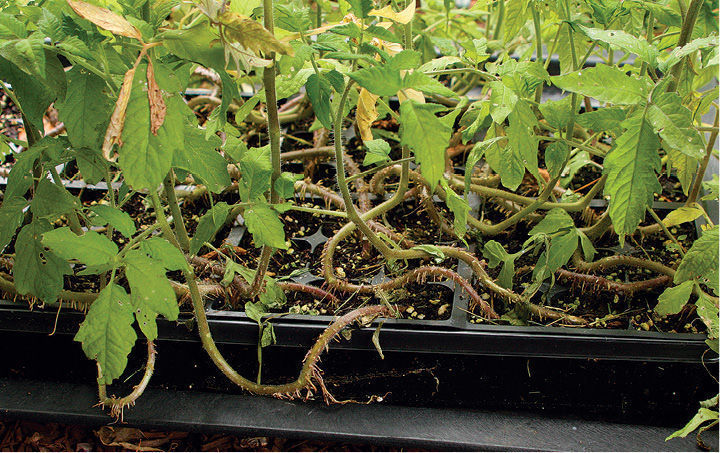
Problem 4: Your tomato seedlings are a root-bound mess
After tomato seeds germinate, you only have about four weeks before the seedlings start to outgrow the cramped quarters of a starter tray. If things get out of control, you need to separate out the knotted mess as soon as possible because it is never too late to salvage the crop. Be ruthless—tomato seedlings are more resilient than you think. Pull the roots apart, using your fingers or a sharp pencil, and select out the strongest-looking plants of the bunch. Repot the top picks into deeper containers, burying all but the top two sets of leaves. Within a week, these repotted seedlings should bounce back from root shock and rebound into healthy transplants. Their traumatic start will have no effect on their later performance.
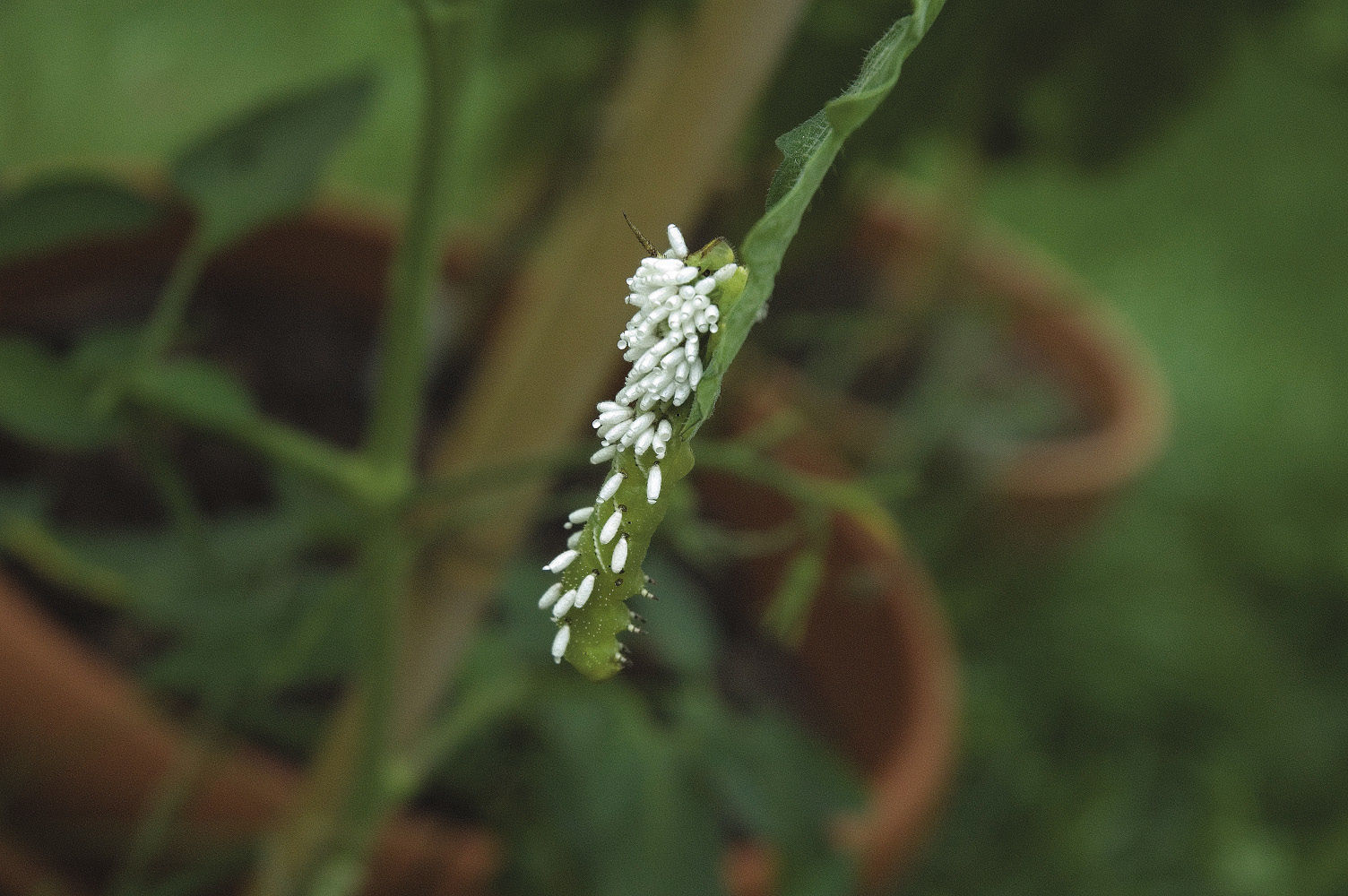
Problem 5: A green worm is eating your tomato plants
If you see this odd-looking caterpillar on your plants, you, unfortunately, have a tomato hornworm issue. The story starts a year earlier in your garden when the hawk or sphinx moth overwinters in the soil as a pupa. The moth emerges, mates, then lays its eggs (which are round and greenish-white) on the underside of leaves in late spring. The eggs hatch in four to five days, and the hornworm emerges. If you aren’t able to spot the eggs (and squish them) before the hornworms start to appear, then your best bet is to handpick them off your plants and dispose of them. If that idea makes you squirm, you can use Bt (Bacillus thuringiensis) to get rid of them, but this only works when the larvae are small. More often than not, however, you’ll see a hornworm covered with white egg sacs from the Braconid wasp. This is nature’s way of taking care of the problem: When the eggs hatch (after killing the worm), you’ll have an army of wasps ready to defend your garden against all types of pests.
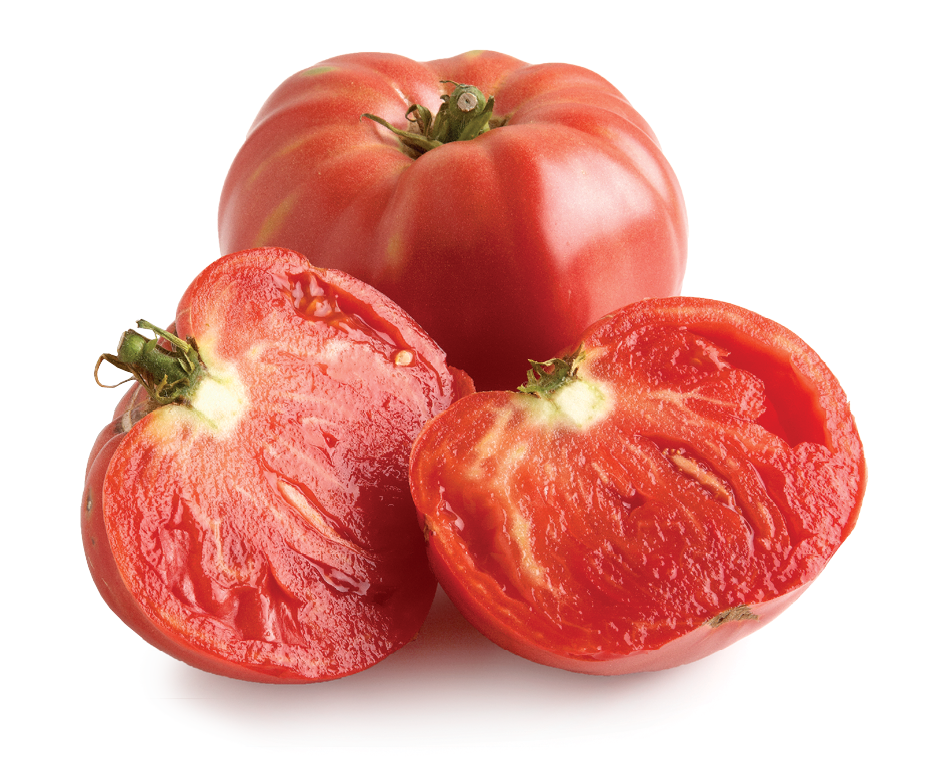
Problem 6: All your ripe tomatoes are watery and tasteless
Nothing is more frustrating than finally harvesting a bunch of seemingly perfect tomatoes from the vine only to find out that they have no taste. Watery, tasteless fruit is due to overwatering. When a plant starts fruiting, it starts looking yellow and tired. That’s when we often rush out and water the plant to help perk it up. This is the wrong thing to do. In the simplest terms, all of that water ends up in your fruit, compromising its flavor and texture. When your plants start looking haggard late in the season, leave them alone. They are supposed to look that way because they are busy putting all their energy into producing delicious fruit.
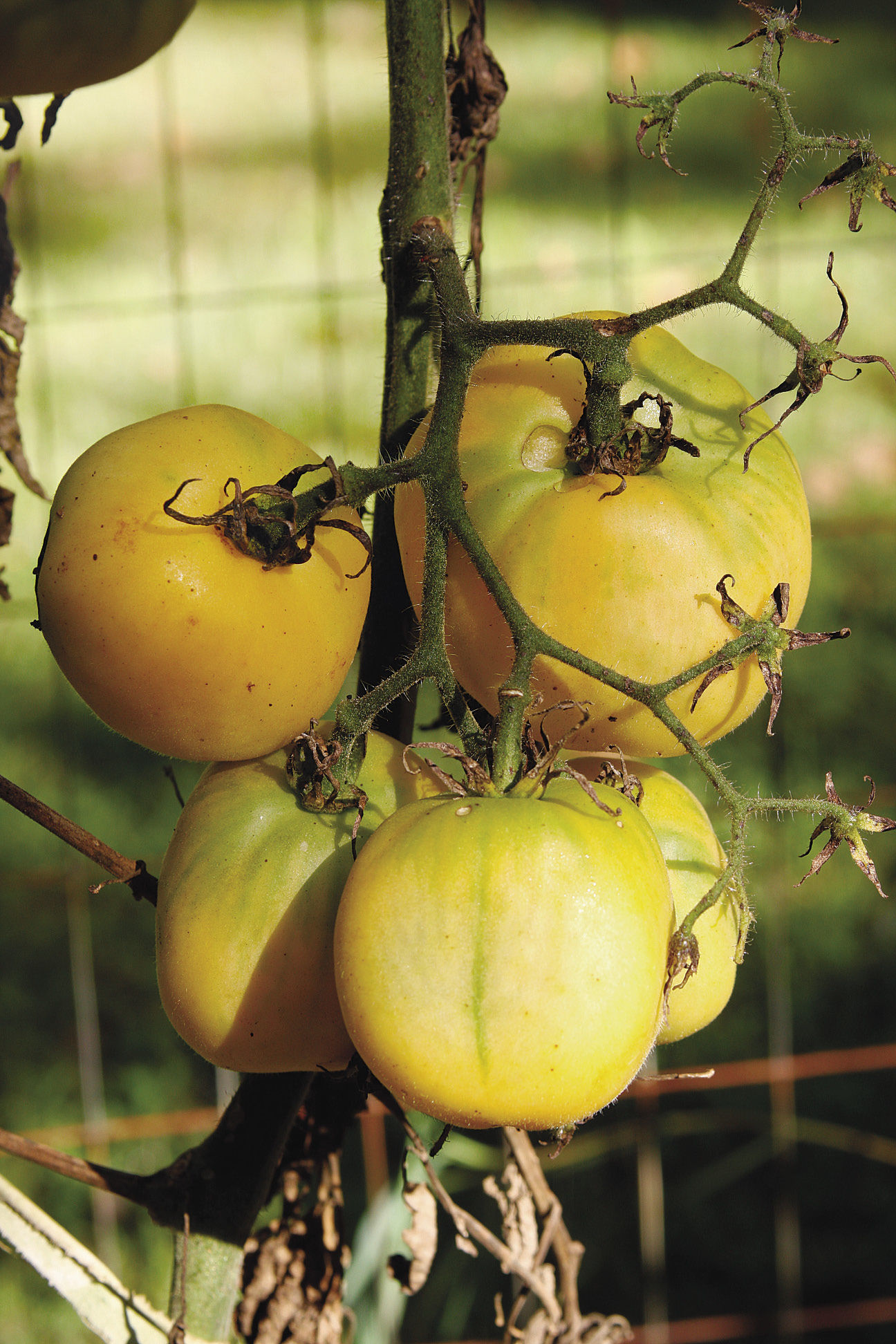
Problem 7: Chew holes are showing up and ruining the tomato fruit
Holes like these could be attributable to several different pests. Large bites are likely from chipmunks or squirrels. But smaller, dime-size divots (pictured) are usually due to slugs, who love to snack on fresh tomatoes. One option is to wrap a strip of copper tape around the base of your plants to prevent the slugs’ slimy nocturnal climbs. If this doesn’t work, use slug baits or traps, which are available at your local nursery. Slugs also like to hide out in damp wood chips or leaf mold, so if that is your mulch of choice, switch to straw instead; the sharp, crisp texture of the straw deters slugs more than any other mulch.
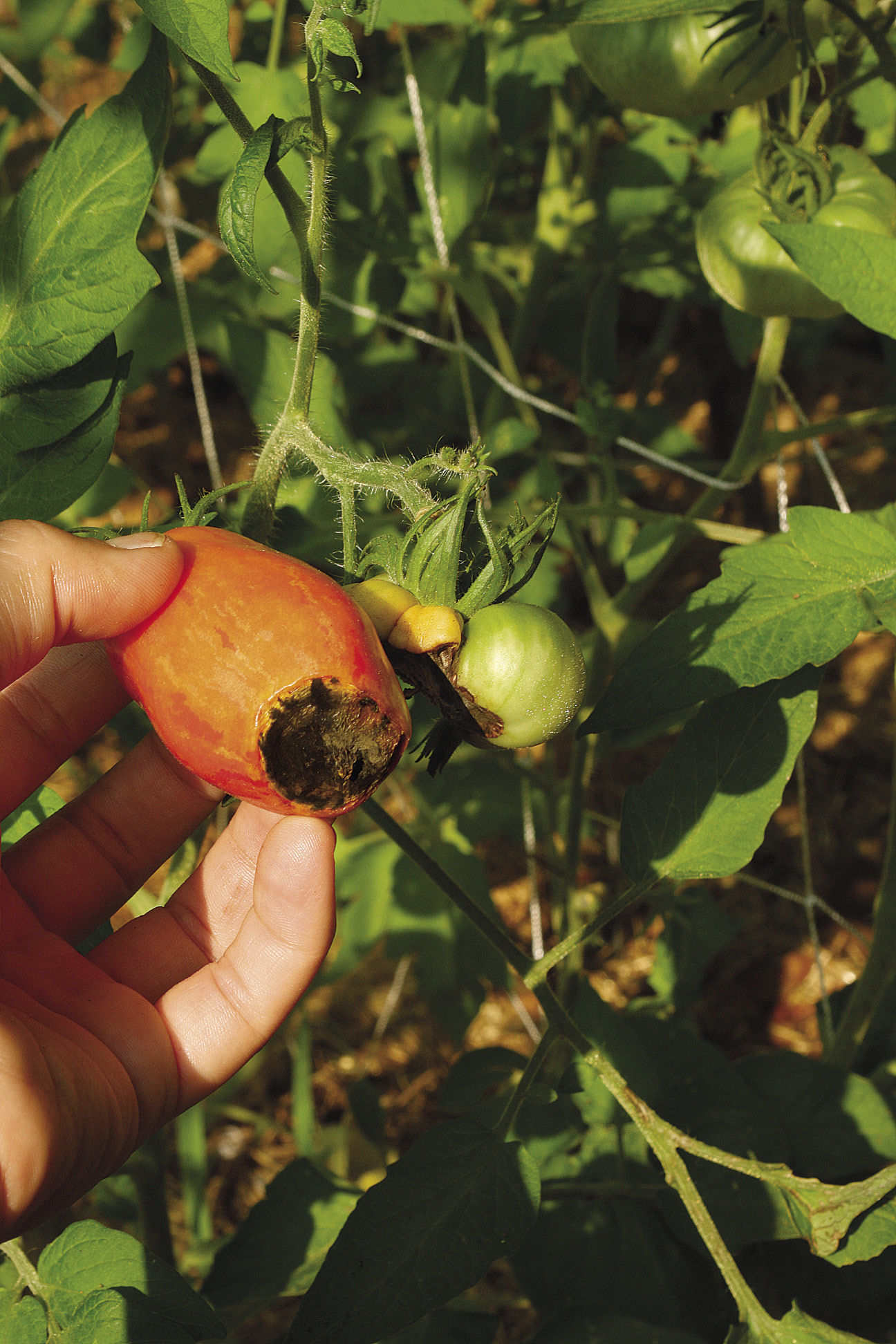
Problem 8: There are black spots on the bottom of the tomato fruit
If you see black spots at the bottom of your tomatoes, blossom-end rot is the likely culprit. This condition is caused by a calcium imbalance within the plant. Several factors can limit a plant’s ability to absorb enough calcium, including fluctuations in soil moisture (too wet or too dry), an excess of nitrogen in the soil, a soil pH that’s either too high or too low, cold soil, and soil high in salts. In most cases, if you haven’t noticed an issue with other garden plants that would indicate a soil problem, watering is the issue. It is critical to maintaining consistent levels of soil moisture throughout the growing season to avoid blossom-end rot. There are also products on the market that claim to “stop the rot,” but the reviews on these are mixed—at best—so buyers beware.

Problem 9: The tomato skin has burned spots
“Burning” is the perfect word to describe this ailment because that is exactly what’s wrong: sunscald. This happens when the delicate skin of a fruit is exposed to large doses of harsh full sun. This problem is a common occurrence in southern locations but can also happen occasionally in cooler zones. If you prune out a lot of foliage from your tomato plants (to promote air circulation), you reduce the amount of leaf coverage that will protect your fruit from sunburn. To avoid the situation altogether, plant a thick-skinned variety, such as ‘Roma’, and prune judiciously. To rectify the situation this year, provide your plants with some shade cover, if possible.
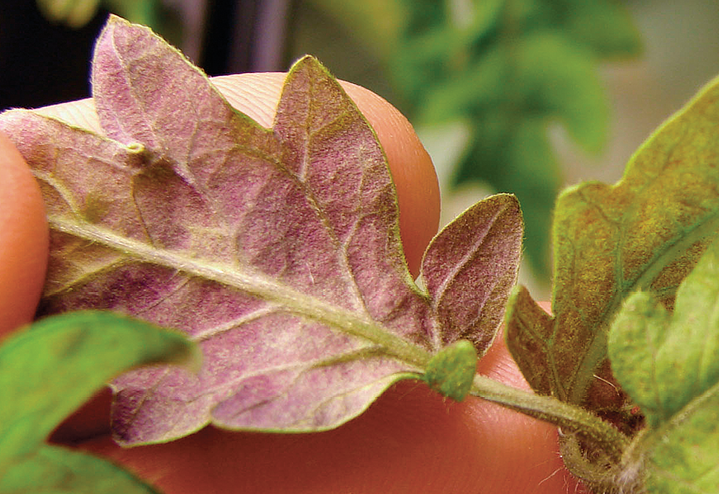
Problem 10: The underside of your tomato seedlings is purple
A seedling’s purple underside is an indication that the plant is not getting enough phosphorus, which will stunt growth and can result in death. You will typically use a half-strength seedling fertilizer for the first three to four weeks of a seedling’s life. If purple leaves start appearing, it may be time to increase the fertilizer to full strength. The phosphorus content (the middle number on the fertilizer analysis) should be at least “3.” Also, plants won’t take up phosphorus from the soil if it is too cold. This can be easily rectified by either moving the seedlings to a warmer location or placing them back on a heat mat (if you had removed them after the seeds germinated). On rare occasions, seedlings will get a purple cast if they are getting too much artificial light; be sure that your seedlings are only receiving 12 to 16 hours of light per day.
Varieties
Try these tough tomatoes
A good harvest largely depends on the preparation and care you take when planting and growing tomatoes. But a few key varieties are known for their exceptional resistance to pests, diseases, and drought, while other varieties are great options for short-season growers. Here are a few of my favorite foolproof tomatoes (rated on a scale of 1 to 10, with 10 being the toughest):
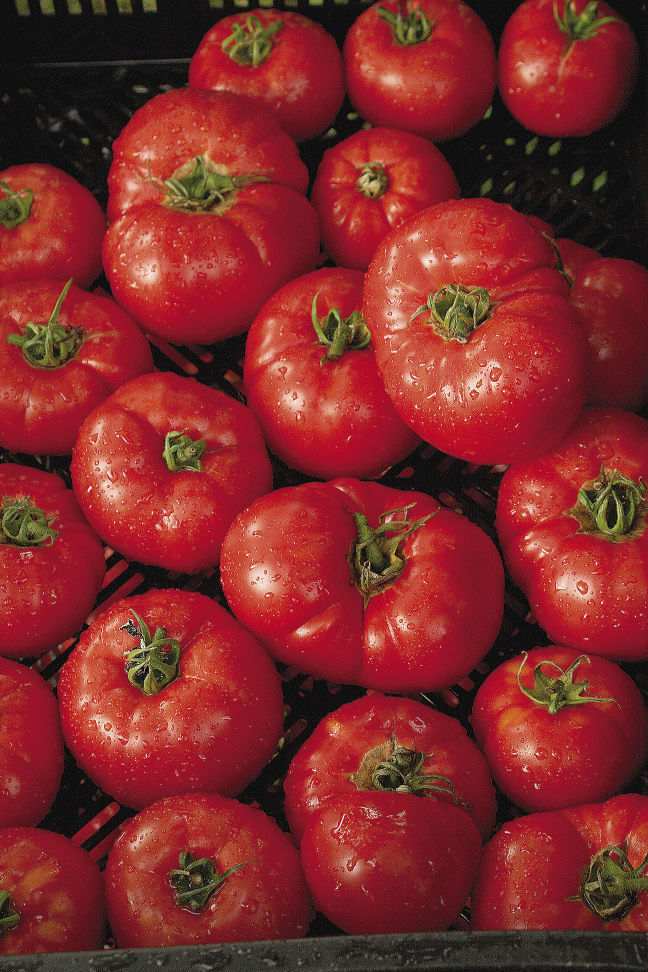
‘Mountain Fresh’ (determinate)
Toughness rating: 9
Claim to fame: Tolerates cool, wet conditions, making it ideal for northern growers; also provides excellent leaf coverage to sunscald-prone fruit in southern locales. Expect high yields as well as blight and nematode resistance.
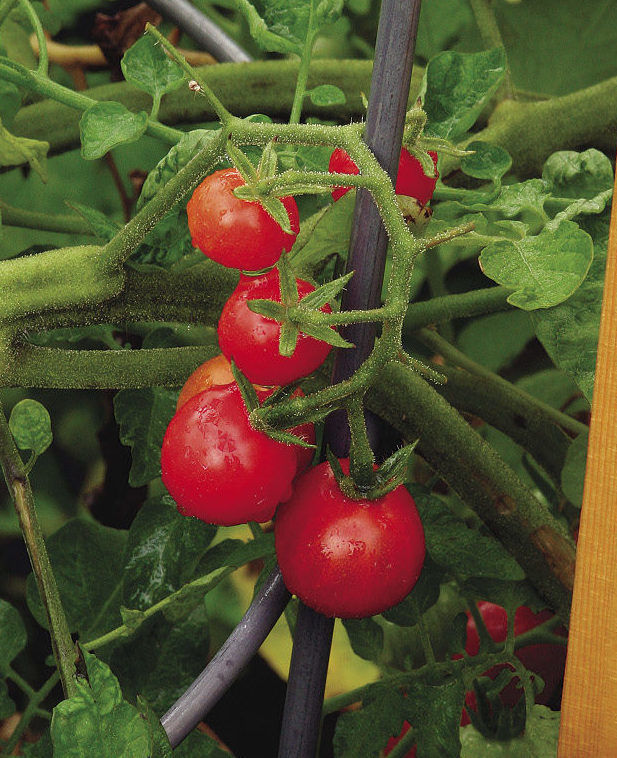
‘Matt’s Wild Cherry’ (indeterminate)
Toughness rating: 7
Claim to fame: Tolerates a wide range of moisture fluctuations without skipping a beat. Produces moderate yields. Has fairly thick skin for a small tomato.
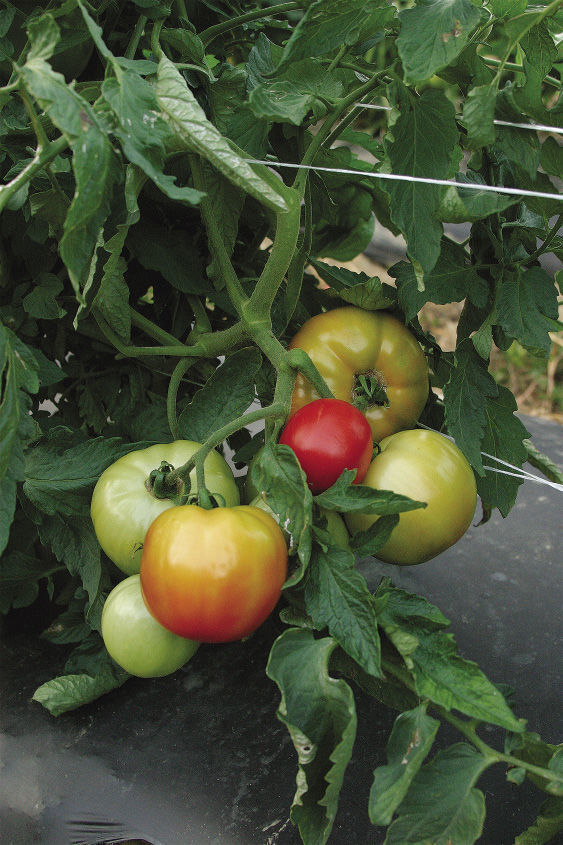
‘Jet Star’ (indeterminate)
Toughness rating: 7 to 8
Claim to fame: Is a vigorous, short-season grower with high yields. Thick skin makes cracking and splitting a nonissue. Has some blight resistance.
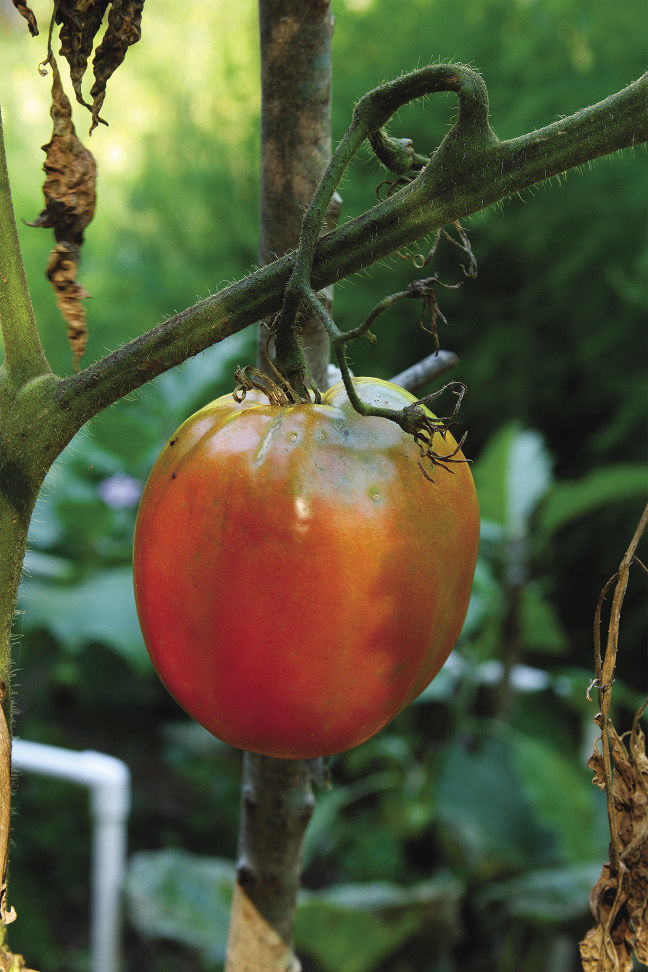
‘Anna Russian’ (indeterminate)
Toughness rating: 7
Claim to fame: Is incredibly drought resistant, making it ideal for Southern and Midwestern growers. Produces moderate yields.
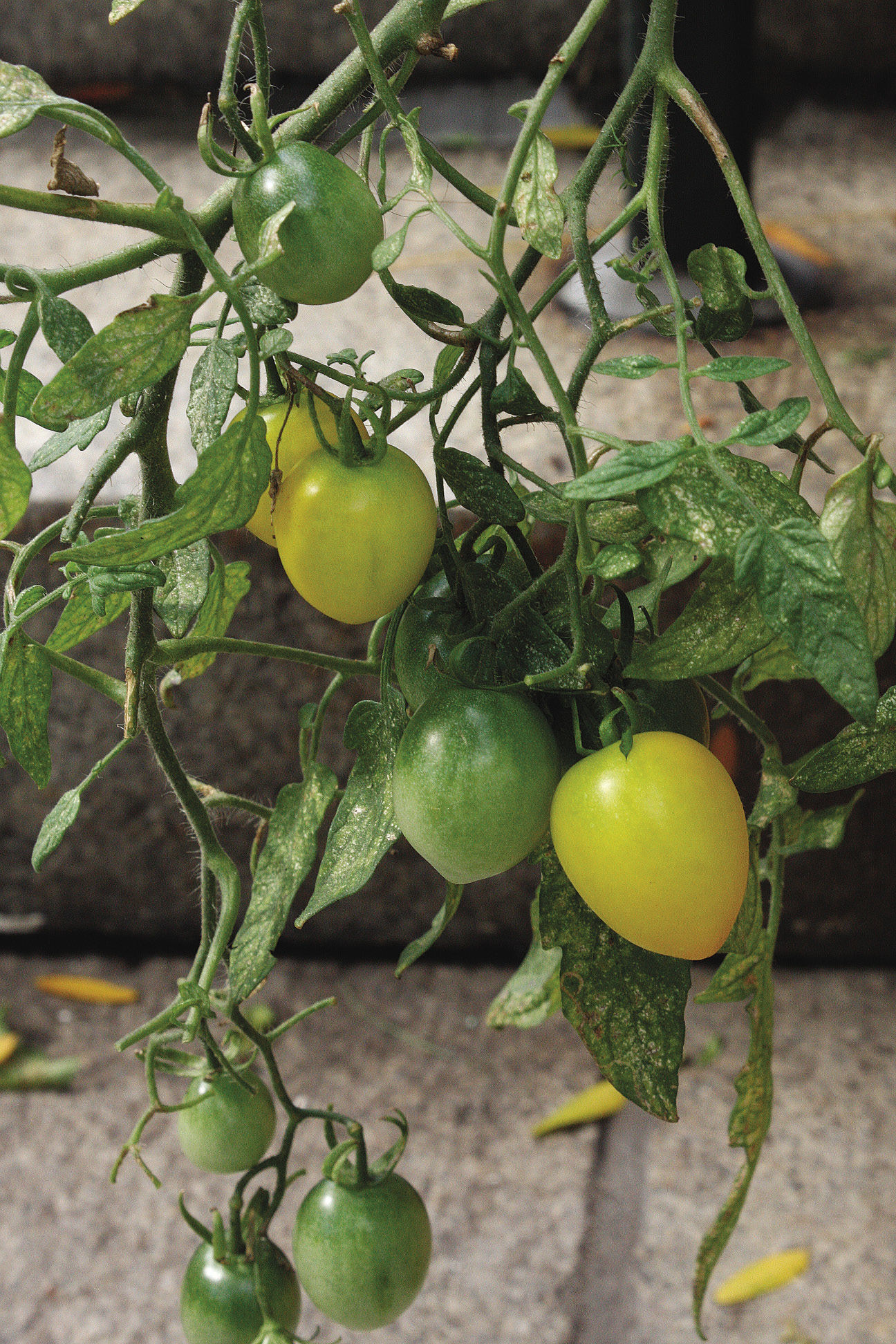
‘Tumbling Yellow Tom’ (determinate)
Toughness rating: 6
Claim to fame: Resists disease, copes well with moisture fluctuations, and is a compact size, making it perfect for growing in containers. Count on high yields of cherry-size fruit.
Danielle Sherry is a senior editor and tomato enthusiast.
Photos: Danielle Sherry; Steve Aitken; Antonio Reis; Kerry Ann Moore; Kathryn Geruntho Frank; Scott Phillips; courtesy of Robert J. Kosinski/Clemson University






Comments
Log in or create an account to post a comment.
Sign up Log in